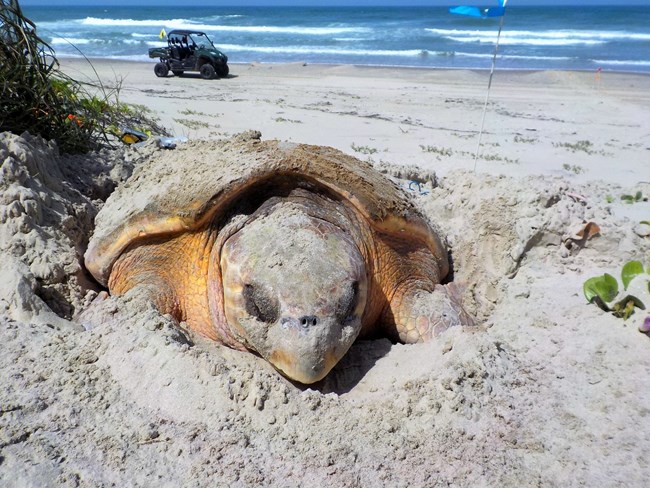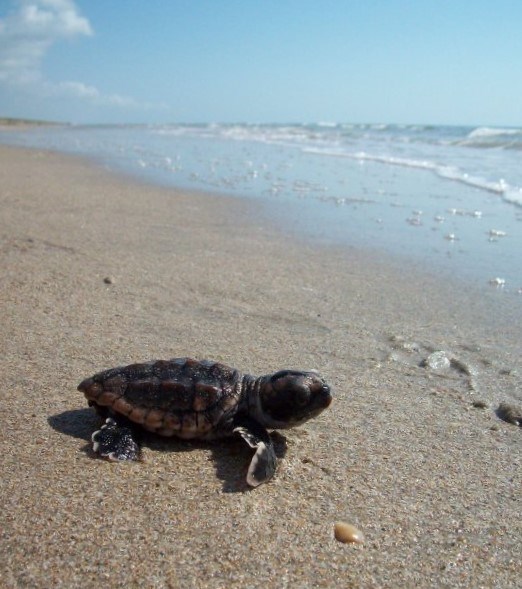|
Most of the loggerhead sea turtle nests found in Texas are found right here at Padre Island National Seashore! Adults are about three feet long and weigh nearly 250 pounds! In Texas, loggerheads occur primarily in nearshore Gulf of Mexico waters, often in association with offshore oil and gas platforms and natural formations. Loggerheads have a huge head and strong jaw muscles to help them crush large crabs, mollusks, and the other invertebrates that make up their diet. In south Texas, their favorite food is the sea pen, a colonial invertebrate that is named because of their resemblance to quill pens, that occur in lush beds in nearshore Gulf of Mexico waters here. 
NPS Photo. Species ProfileSpecies: Loggerhead (Caretta caretta) Fun Facts about the Loggerhead Sea Turtle!
NPS Photo. What a big head you have! The original, 16th century term “logger-head” literally meant “block-head.” A logger was a big block of wood that was fastened to a horse’s leg so it couldn’t run away. The large head of this turtle in proportion to its body likely inspired its common name. Loggerhead Sea Turtle Literature Cited:National Marine Fisheries Service. 2020. Loggerhead Sea Turtle (Caretta caretta) species page. Retrieved from https://www.fisheries.noaa.gov/species/loggerhead-turtle |
Last updated: November 11, 2023
